Best Photo Editing Software: Complete Guide to Perfect Images
Introduction
Photo editing is a crucial step for any photographer, amateur or professional. Whether you want to fix small imperfections, adjust lighting and colors, or completely transform an image, photo editing software is an essential tool. This article presents the best photo editing software available, both free and paid, suitable for all skill levels. Let's dive into the world of tools that will help you enhance your photos.
Why Use Photo Editing Software?
1. Quality Improvement
Photo editing software can improve the quality of images by adjusting brightness, contrast, saturation, and sharpness. This can transform an ordinary photo into a spectacular image.
2. Correction of Imperfections
They provide tools to correct imperfections such as skin spots, red eyes, or unwanted objects in the frame. This helps to present cleaner and more professional images.
3. Creativity and Artistic Expression
Editing software offers a multitude of filters and artistic effects to express your creativity. You can experiment with various styles and create unique works of art.
4. Preparation for Printing
For professional photographers, photo editing is essential to prepare images for printing. This ensures that colors and details are optimized for high-quality prints.
Best Paid Photo Editing Software
1. Adobe Photoshop
Description : Adobe Photoshop is the industry standard for professional photo editing. It offers a full range of tools for editing images, from simple cropping to complex manipulations.
Benefits :
- Advanced and versatile features.
- Wide range of filters and effects.
- Integration with Adobe Creative Cloud.
Disadvantages :
- High learning curve.
- Expensive subscription.
Ideal for : Professionals and advanced users.
2. Adobe Lightroom
Description : Adobe Lightroom is designed for mass photo processing and management. It offers powerful tools for basic and advanced editing, while allowing efficient organization of image libraries.
Benefits :
- User-friendly interface.
- Excellent for batch processing.
- Synchronization with the cloud.
Disadvantages :
- Less advanced features compared to Photoshop.
- Subscription required.
Ideal for : Professional photographers and serious amateurs.
3. Capture One Pro
Description : Capture One Pro is professional photo editing software known for its exceptional color processing and precise editing tools.
Benefits :
- Excellent color management.
- High precision retouching tools.
- Customizable interface.
Disadvantages :
- High price.
- Learning curve for new users.
Ideal for : Professional photographers and photo studios.
4. Affinity Photo
Description : Affinity Photo is an affordable alternative to Photoshop, offering comparable features at a single price without a subscription.
Benefits :
- Affordable price.
- No subscription.
- Wide range of features.
Disadvantages :
- Fewer plugins and extensions available.
- Learning curve.
Best for : Amateur and professional photographers looking for an alternative to Photoshop.
Best Free Photo Editing Software
1. GIMP (GNU Image Manipulation Program)
Description : GIMP is an open-source photo editing software that offers many features comparable to Photoshop.
Benefits :
- Free.
- Open-source with a large developer community.
- Wide range of features.
Disadvantages :
- Less intuitive user interface.
- Less support for commercial plugins.
Best for : Amateur photographers and budget users.
2. Darktable
Description : Darktable is a free photo editing and processing software designed for photographers. It offers non-destructive editing tools and efficient image library management.
Benefits :
- Free and open-source.
- Excellent RAW file handling.
- Non-destructive editing tools.
Disadvantages :
- Interface can be confusing for new users.
- Fewer advanced features compared to Lightroom.
Best for : Amateur and professional photographers looking for a free alternative to Lightroom.
3. Paint.NET
Description : Paint.NET is a free and user-friendly photo editing software that offers basic and advanced features for image editing.
Benefits :
- Easy to use.
- Free.
- Good for simple touch-ups.
Disadvantages :
- Fewer advanced features.
- Not as powerful as paid software.
Ideal for : Beginner and amateur users.
4. PhotoScape X
Description : PhotoScape X is a free photo editing software that offers a range of easy-to-use tools to enhance your images.
Benefits :
- Intuitive user interface.
- Wide range of tools and filters.
- Free with paid options for advanced features.
Disadvantages :
- Limited features compared to professional software.
- Ads in the free version.
Ideal for : Beginner and amateur users.
Tips for Choosing the Right Photo Editing Software
1. Assess Your Needs
Determine which features are essential for you. Do you need simple edits or complex manipulations? This will help you choose software that suits your needs.
2. Consider Your Skill Level
Choose software that matches your skill level. Beginners may prefer simpler tools with a gentle learning curve, while advanced users will benefit from software with more robust features.
3. Test Trial Versions
Many photo editing software offers free trials. Take advantage of this opportunity to test out several options before making a final decision.
4. Check Compatibility
Make sure the software is compatible with your operating system and hardware. Some software may require significant resources.
5. Budget
Consider your budget. There are free and paid options, and some free alternatives may offer enough features to meet your needs without additional cost.
Conclusion
Whether you’re a hobbyist or a professional photographer, choosing the right photo editing software is essential to improving the quality of your images. From free options like GIMP and Darktable to paid solutions like Adobe Photoshop and Lightroom, there’s a tool for every skill level and budget. Take the time to assess your needs, test out different options, and choose the software that will allow you to fully express your creativity.
FAQs
What is the best photo editing software for beginners? For beginners, software like Paint.NET and PhotoScape X are recommended because of their intuitive interface and ease of use.
Is Adobe Photoshop better than Lightroom? Adobe Photoshop is great for complex editing and image manipulation, while Lightroom is better for batch processing and managing photo libraries.
Are there any free alternatives to Photoshop? Yes, free alternatives to Photoshop include GIMP and PhotoScape X, which offer many similar features.
What are the benefits of using paid photo editing software? Paid software usually offers more advanced features, better customer support, regular updates, and compatibility with commercial plugins.
How can I improve my photo editing skills? Improve your skills by following online tutorials, attending workshops, practicing regularly, and experimenting with different editing techniques and tools.




































































Leave a comment
All comments are moderated before being published.
This site is protected by hCaptcha and the hCaptcha Privacy Policy and Terms of Service apply.